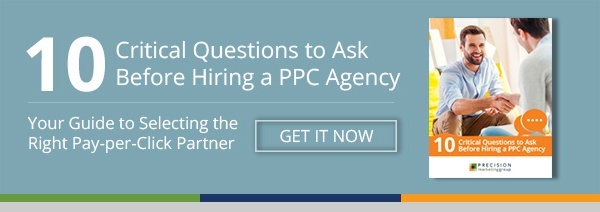Do you want to generate more leads and sales for your business?
I'm going to share with you a powerful, but underused technique to help you:
- Attract more prospects / leads
- Attract more of your best prospects
- Increase your prospect’s desire for your product or service
It is surprisingly simple, but effective.
Think Simple to be Effective
At the risk of oversimplifying marketing, I’d like to suggest we simplify the sales and marketing process so we can extract an important approach.
To effectively attract targeted leads and convert them into sales, you must do two things:
- Find out what your best prospects want
- Give it to them
I know... it’s not that simple, but let’s keep it that simple for just a second.
The essence of this approach is being focused on the prospect, not your product, service or company.
A Common Mistake Companies Make
The mistake many businesses make in lead generation is being too product/service-centric and not prospect-centric.
When you do this, you're essentially trying to convince a prospect to want or need what you are offering—based on what you think is valuable about it. That’s like trying to convince someone they're hungry (or should be) for the exact type of food you serve.
This approach (oversimplified) looks like this:
- Determine why your product or service is valuable.
- Convince a prospect they need and will benefit from it.
But there is a better way.
The Parrot Technique
First, start with the prospect. Understand what they want (what they're hungry for or need), why that’s important to them, and then speak that language and those solutions back to them.
You parrot back to them what they want.
Think about young children. Which is easier?
- Persuade them about why they should want or care about something that will benefit them (that, oh by the way, is important to you).
- Find out what they want… and give it to them.
Discovering What Your Prospects Really Want
How do you discover the likes and dislikes of your best prospects?
Well, one option is to do extensive (and expensive) surveying of prospective or existing buyers.
One downside of that approach (besides the time and money required) is that often prospects don’t know what they want, or how much they want it… until they are in the mindset to buy.
There is a faster, cheaper way to get some excellent insights on what your prospects want (and don’t want)… when they have just completed their buying efforts, and they're clear on what they want.
Software company Wordstream offers an innovative way to get some quick and dirty market research on the thought processes of your prospects.
B2B Market Research
If you're targeting business leads, you can leverage the buyer insights on a site like G2 Crowd.
For example, let’s say you sell a software platform, which has been reviewed by users on G2 Crowd. You notice that many times the language used by those who are highlighting what they like about the platform include things like:
- “Easy”, “intuitive”, “ease of use”
- “Custom” or “customizable”
This is a goldmine of insight for how you want to position your software.
You can also look at the language of the reviews for your competitor’s software platform. Maybe several users complain that although their platform is powerful, with lots of capabilities, it is NOT intuitive or easy to figure out and use. Now you know how to position your product compared to theirs.
B2C Market Research
If you're pursuing consumer leads, you need not look any further than Amazon. It's loaded with reviews from everyday people describing what they like or don’t like about a product.
For example, let’s say you're representing a health and wellness company providing nutritional solutions to consumers. What can you learn on Amazon?
By scanning reviews for comparable products to yours, you will quickly pick up patterns on what people like (and don’t like) about a product:
What they want #1: Don’t have to take multiple pills every day. This one pill is strong enough to last all day.

What they want #2: Reduced dependency on energy drinks.

What they want #3: No residual bad taste.

Now you know what people like… in the exact language they would use.
Now what? How can you best use this information? Read on…
How To Use Your Market Research
There are countless ways you can use these valuable insights. I’ll give you four...
1. Test the potency of each statement.
Not everything noted as being valuable is equally as attractive to your target audience. Some statements are more potent than others.
To discover which are the strongest, you can do some testing using Google AdWords. You can update your PPC ads and/or landing page copy to see which phrases and sentiment garner the best response rates.
For example, you might find that featuring “intuitive” or “easy to use” in your ads leads to a higher response rate on your ads than using the concept of “flexible” or “customizable” software. Both are viewed as attractive, but usually one has a stronger universal appeal.
Here's a helpful article that details how to use this testing approach to determine your strongest value propositions… and get a higher percentage of leads and sales.
2. Sales team experimentation.
Have your sales team test out these phrases in their sales conversations and presentations. They may find that certain phrases get a stronger or more universal positive response.
3. Update your marketing materials.
If you know something is appealing (or not) to your target audience, make sure you update your marketing materials to highlight those items… and make your materials more effective.
4. Use insights to improve your products/services.
Last but not least, if your market research is revealing that people really like X, make sure what you offer them is strong in that area. While all improvements are good, focus first on those elements that are known to be winners.
Remember this: If you start with what your prospects want, you will have a MUCH easier time convincing them to consider, and ultimately, purchase your product or service.
… and this means more leads and sales. Oh happy days!




